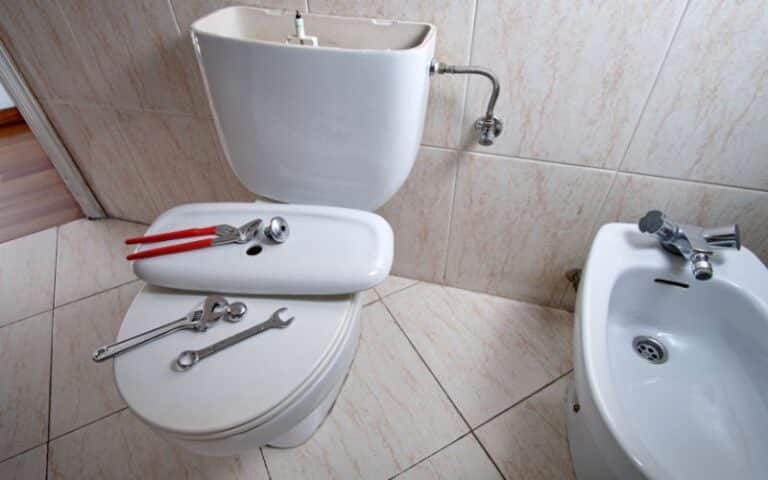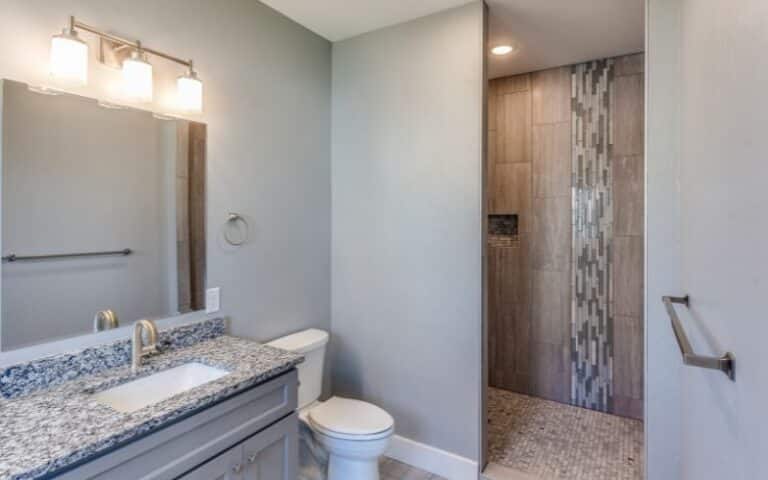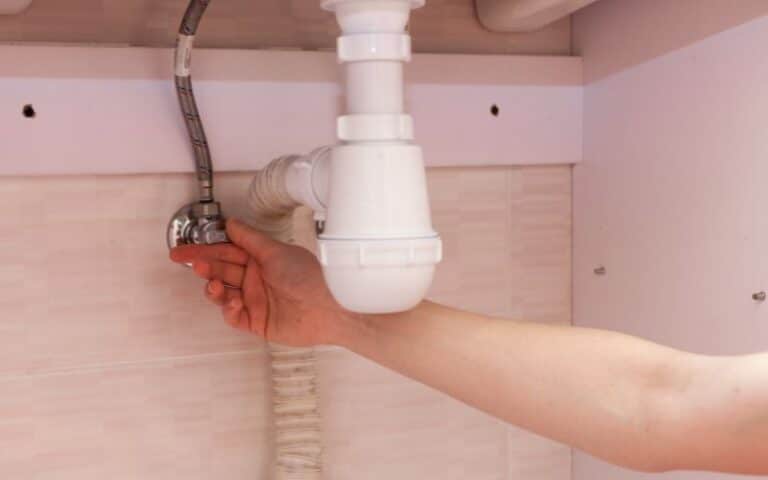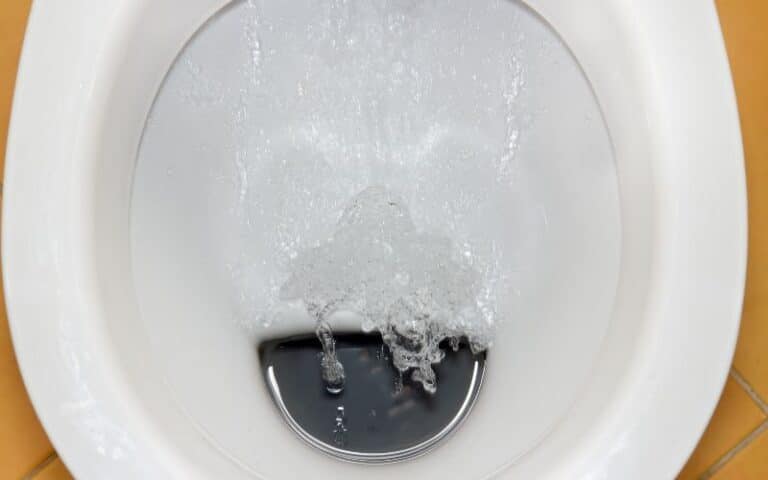The toilet flange helps connect the toilet to the sewage pipe. Aside from providing a stable base for the toilet seat, the flange also helps seal and prevent leaks.
However, if the flange is unlevel or not set properly, it can make your toilet rock back and forth and leak at the base.
So, setting the flange to the right height is important to enjoy the comfort of your toilet. What, then, is the ideal toilet flange height above the floor?
The proper toilet flange height should, ideally, be about ¼ inch above the floor. It can also sit flush with the finished floor. This alignment will help prevent toilet wobbling and leaks, resulting in a stable and leak-free installation.
In this article, you will explore the importance of the toilet flange height in detail. Get ready to learn how to handle your toilet installations confidently.
How High Should The Toilet Flange Be Above the Floor?
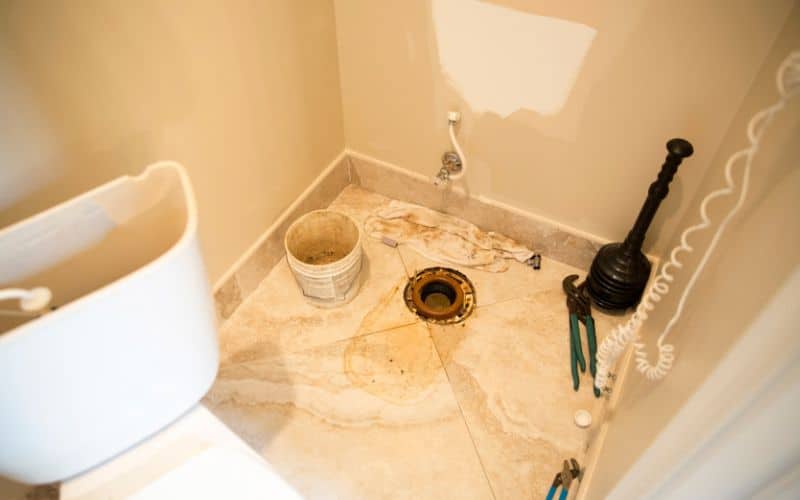
When setting your toilet flange, consider the height that best suits your preferences.
While this may be true, be sure also to ensure a secure, leak-proof connection between the toilet and the waste pipe.
You can align the toilet flange with the floor in two major ways, viz:
#1. Align The Flange Flush With the Floor
The toilet usually looks neat and attractive when the flange is the same height as the tiles. However, placing the flange slightly above the flooring is ideal.
When the flange sits flush with the floor, it creates a smooth transition from the floor to the toilet base.
You will have a tidy look and an improved appearance in the bathroom.
Moreover, having the flange flush with the tiles makes cleaning and maintaining the area around the toilet easier.
There are no awkward gaps or uneven surfaces, making it difficult to keep the area around the toilet clean.
While installing, professionals should take caution to lay the tiles properly to achieve flush alignment with the toilet flange.
When there is coordination between the flooring and plumbing professionals, they can achieve this flush alignment without any problems.
#2. Position The Flange Slightly Above The Floor
When installing a toilet, you should set the flange slightly above the finished floor level, typically around ¼ inch.
For example, if your floor features tiles, place the flange on top of the tiles, letting it protrude slightly higher than the floor’s surface.
Generally, the ideal toilet flange should be ¼ inch above the floor, but variations are possible. The flange could be higher than ¼ inch or even level with, or slightly lower than, the floor.
However, setting the flange around ¼ inch above the floor would be best for ideal results.
Below is a tabular comparison of aligning the flange flush with the floor vs. positioning it slightly above the floor:
| Aspect | Flush With The Floor | Slightly Above The Floor |
|---|---|---|
| Aesthetics | Provides a clean and even appearance. | It may be visible but can be completed with a cap or decorative ring. |
| Installation problem | Requires more precision, and it’s time-consuming to level. | Easier to complete with less precise leveling. |
| Cleanliness and maintenance | It’s easier to clean and is less likely to build up residue. | Requires more. |
| Water and leak prevention | Offers better sealing against leaks. | Requires extra attention to achieve good sealing. |
| Flexibility in future renovations | You can change the floor anytime. | You can change the floor anytime. |
Should The Toilet Flange Be At The Same Height With The Tiles?
You can align the toilet flange at the same height as the tiles during installation. The toilet flange is the circular fitting connecting the toilet and the sewage pipe.
So, the flange’s top surface can properly fit when it’s level with the tiles around it. However, ideally, it’s better to install a toilet flange over the top of a finished floor.
The recommended height is exactly ¼ inch above the floor. Nonetheless, you can also align the flange to be flush with the floor.
Below are some reasons you can install the toilet flange at the same height as the tiles.
#1. Seal and Stability
Aligning the flange flush with tiles will enhance a stable seal between the toilet and the waste pipe.
The wax ring may compress uniformly and provide a strong connection while offering a waterproof seal.
The flush position avoids sewage gas and water leaks.
#2. Toilet Stability
When the flange is flush with the tiles, the toilet base sits securely on the floor. This method ensures the toilet doesn’t wobble or rock, providing stability during use.
When the table is not stable, the toilet can cause stress toilet can cause stress on the wax ring and connections.
An unstable toilet leads to leaks and potential damage.
#3. Easy Cleaning
The ease of cleaning around a toilet with the flange sitting flush with the tiles is satisfying. The flush position of the flange simplifies cleaning.
It leaves no recesses or gaps for dirt or debris to accumulate, which makes cleaning more easy.
#4. Smooth Appearance
The surrounding is smooth and visually appealing when the flange is at the same level as the tiles. The smooth appearance improves the looks of the bathroom.
#5. Design Continuity
Consistent design elements are important in modern bathrooms, as clean lines and seamless integration of fixtures are desirable.
This helps create a visually appealing look where the toilet blends in with the rest of the flooring.
What Is The Ideal Toilet Flange Height Above A Finished Floor?
The ideal toilet Flange height is 1/4 inch above the finished floor. Recall that before installing the toilet, the first step is to measure the toilet flange height from the floor.
After removing the toilet, the flange will be visible, and you can accurately measure it. When installing a toilet, it is best to have the flange sit slightly above the floor.
This gives enough clearance for any wax ring to form a strong seal.
However, the flange height may be below the ideal level if the bathroom floor was recently tiled or changed. Therefore, you will need help.
Consider installing a toilet flange extender for a quick and easy installation to get the necessary clearance from the floor.
Most extenders have long bolts that you may need if the existing flange is below the floor level.
Typically, you can get extenders in ¼ inch and ½ inch sizes. They allow the adjustment of the height of the existing flange.
Can A Toilet Flange Be Higher Than Your Floor?
Yes, a toilet flange can be slightly higher than the floor, but the recommended height of the flange above the floor is ¼ inch. Anything above ¼ inch is abnormal.
There are a few reasons why the flange could be higher than your floor, including.
- The plumber may not have allowed the extra height of the finished floor during the installation.
- The material for the new floor may be thicker or thinner than the old floor.
A toilet flange can also be ¼ inch below the floor surface for the same reasons. But having the flange be more than ¼ inch higher or lower than the floor surface is not a great idea.
It will make it more difficult to install your toilet. It is, therefore, necessary to know when to install a toilet flange correctly.
When To Install A Toilet Flange?
It’s better to wait until they put out the floor to allow you to install a toilet flange accurately. At this point, you will know how high the finished floor surface will be.
In this situation, position the flange over the drain. The base of the top of the flange should rest on the surface of the floor.
That will leave you with the optimum height to fit the toilet on top.
On the other hand, you will need those extra pieces of tile or whatever material they used in constructing the floor, if any.
You must lay them under the flange during installation, giving you the ideal clearance.
FAQ
How Should I Align My Flange With The Floor?
Follow the steps below to align the flange with the floor without any problems.
First, measure the thickness of the finished flooring, including the tiles, and ensure the flange is sitting at the correct height.
If necessary, you can add spacer rings to the flange to help with height adjustment. The spacer rings can improve the elevation and allow flexibility in aligning the flange with the tiles.



